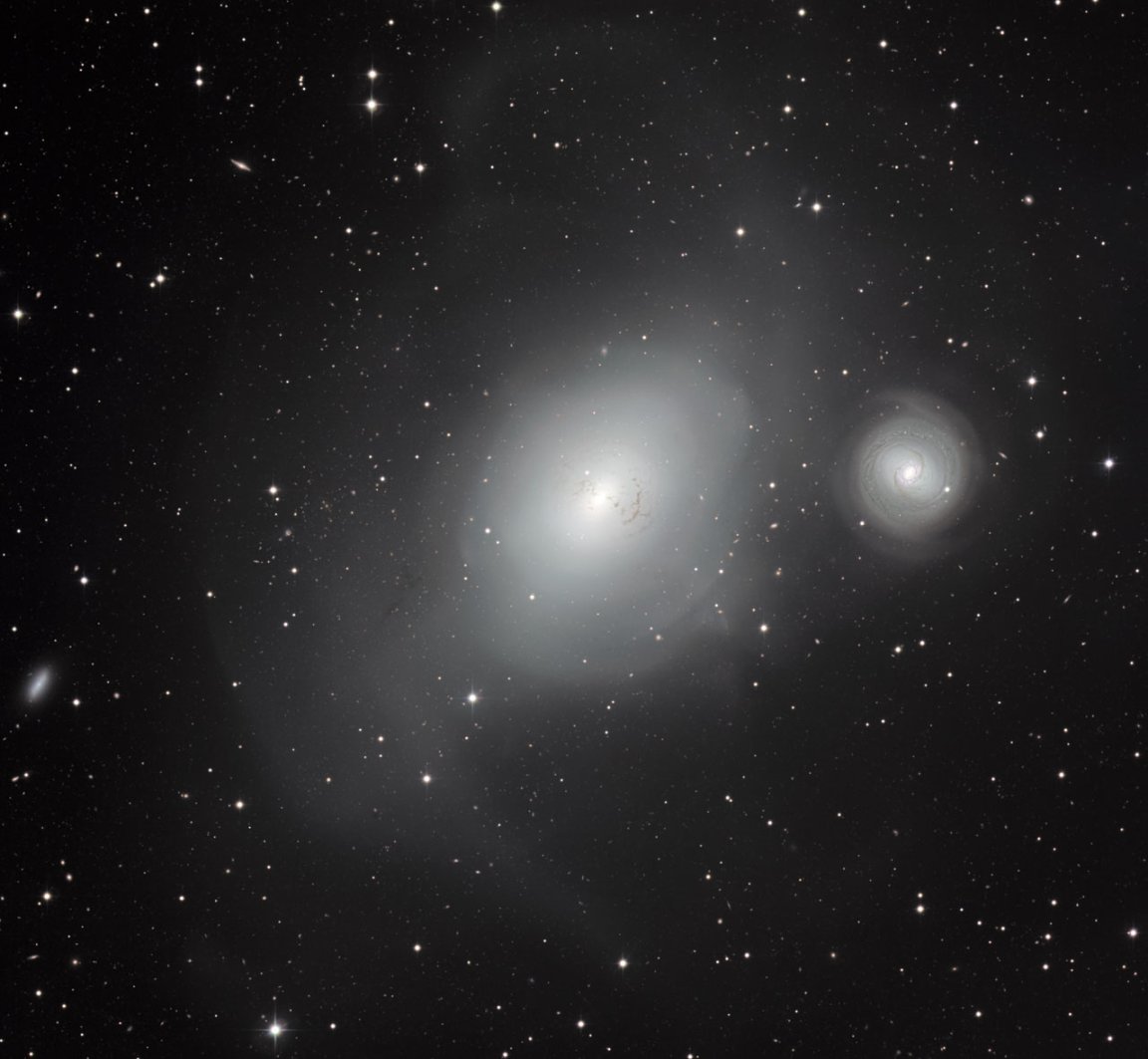

Lurking somewhere in this image is a cleverly disguised “serial killer”. A cosmic cannibal of sorts, the large fuzzy disk is a galaxy known as NGC 1316 (aka Fornax A). Off to the right a bit we see the smaller, unassuming spiral galaxy NGC 1317. Despite living in the same galactic neighborhood, these two galaxies have led extremely different lives: NGC 1317 a quiet ordinary life and NGC 1316 covered in battle scars indicative of a violent past.
New observations out of the ESO’s La Silla Observatory from the MPG/ESO 2.2-meter telescope show these cosmic contradictions. NGC 1316 has revealed new clues to its shady past, including evidence of peculiar cosmic dust lanes surrounded by an immense stellar envelope and a strange group of globular clusters. Also, if you look closely you can see faint tidal tails – the wispy remnants of stars ripped from their place in the galaxy and flung into space. These new clues are direct evidence that show NGC 1316 consumed a dusty spiral galaxy some three billion years ago. This evidence reveals a disturbing pattern of NGC 1316 capturing and gobbling up any galaxy that dared to cross its path.
Located approximately 60 million light-years away in the constellation Fornax, NGC 1316 is more commonly referred to as Fornax A as it is the brightest radio source in the constellation and the fourth brightest radio source in the whole sky (at 1400 MHz). The brightness is most likely due to galactic interactions fueling the galaxy’s supermassive black hole. The image we see here is comprised of several images taken by the 2.2-meter telescope. The observations were part of a study to uncover the secrets of this unique system. Astronomers did receive a nice surprise courtesy of NGC 1316. If you look just to the left of it, you will notice a very dense cluster of faraway galaxies.
To see more of the images captured by the 2.2-meter telescope click here.